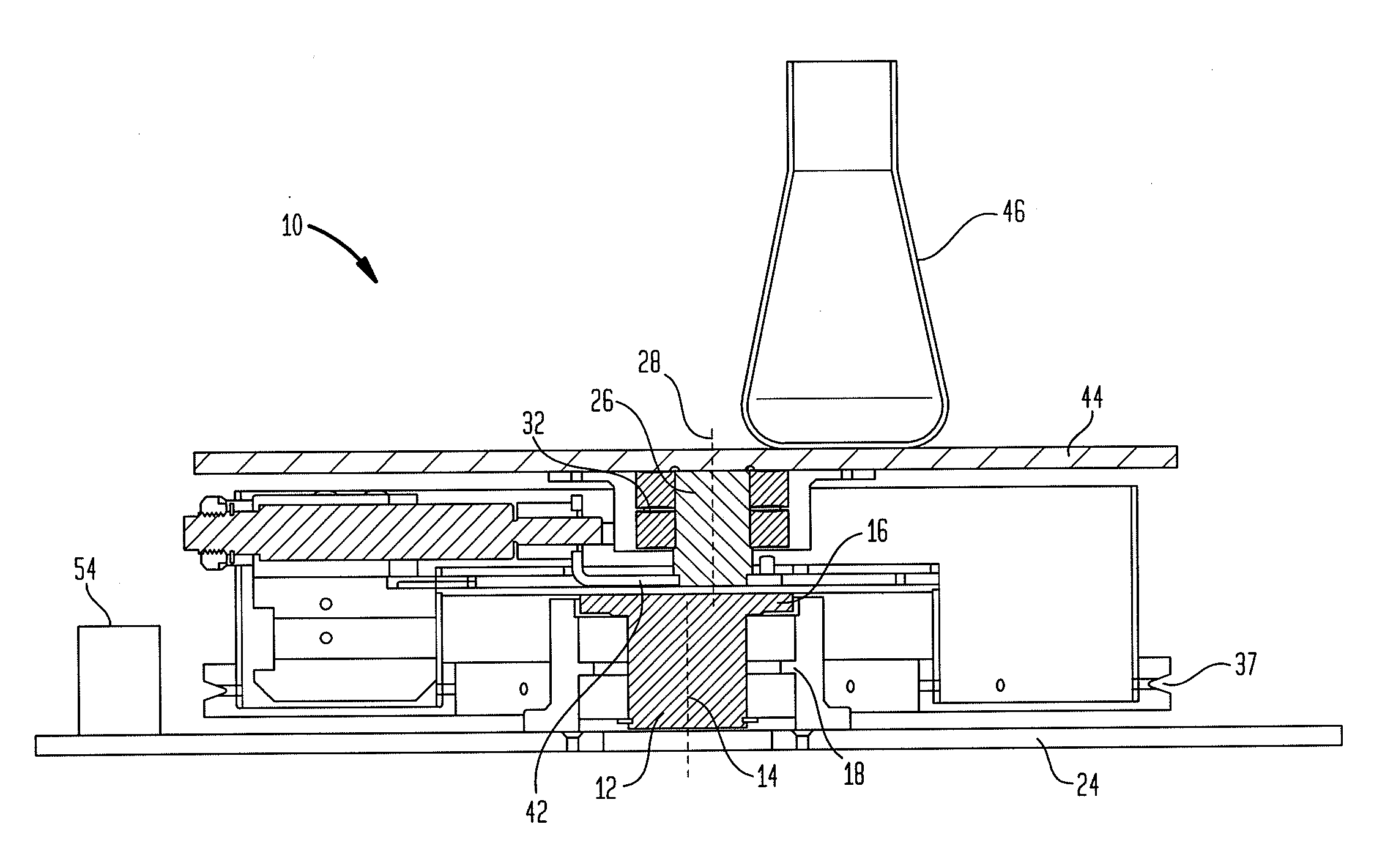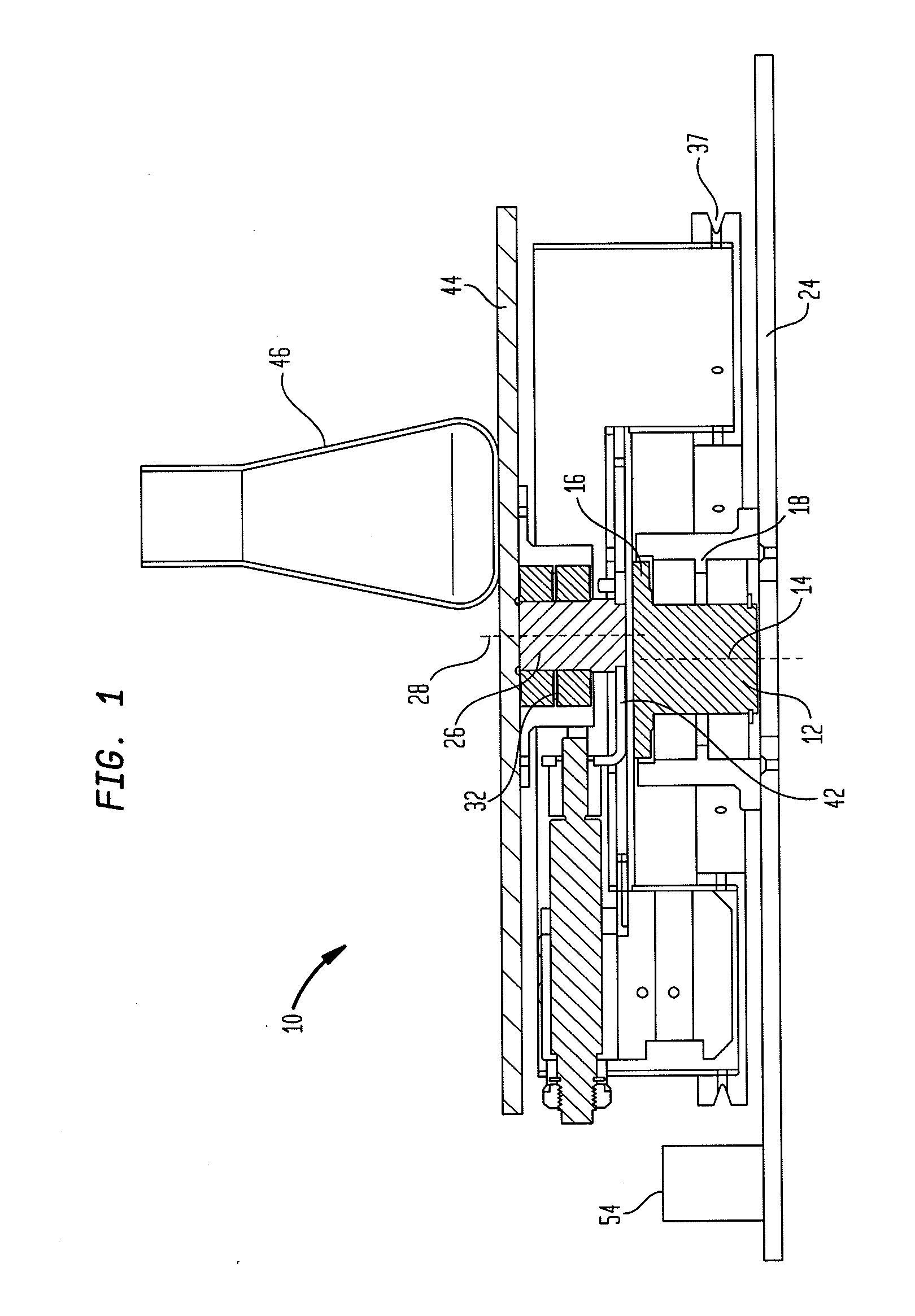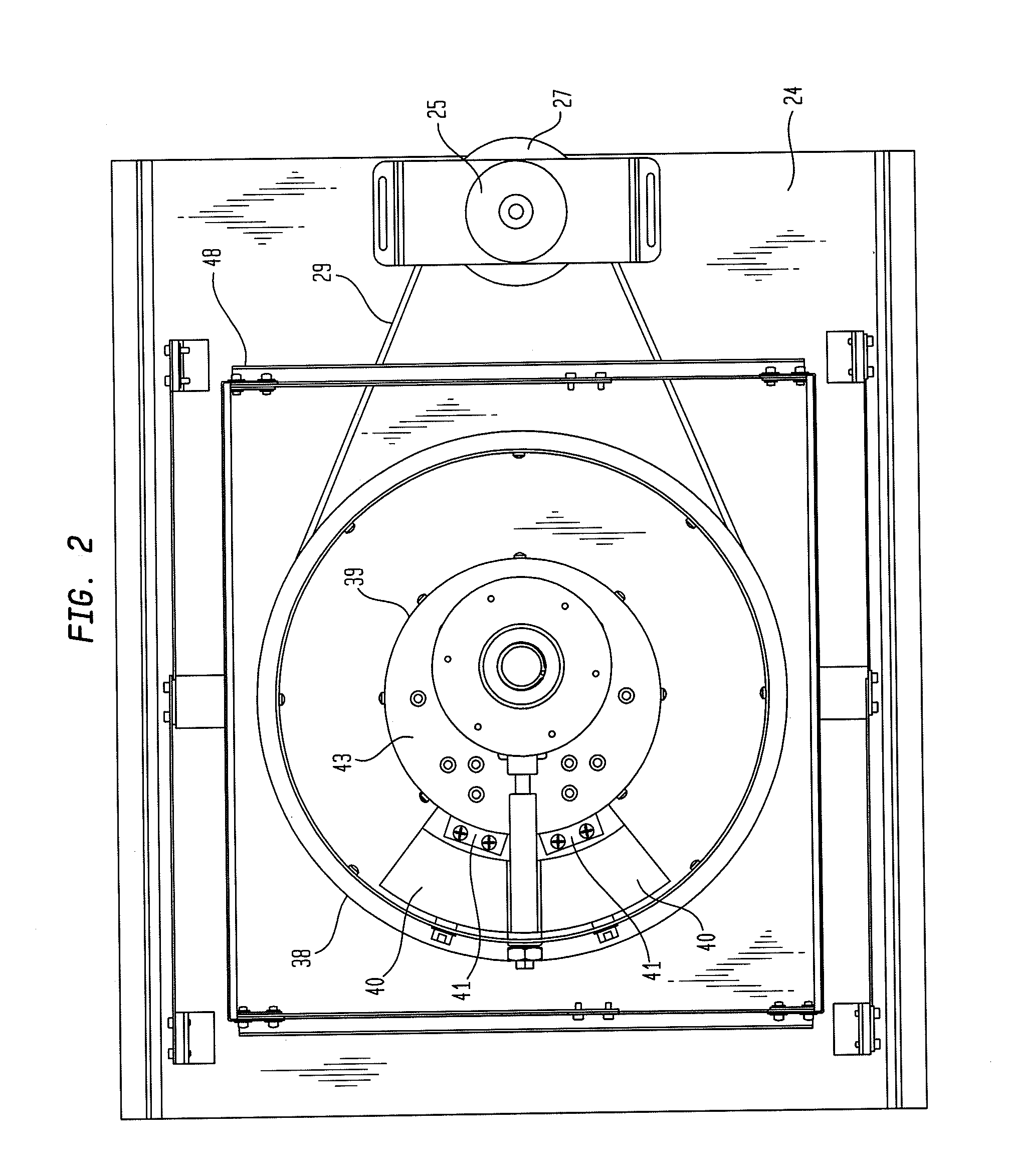Adjustable orbit imbalance compensating orbital shaker
a technology of orbital shaker and orbital imbalance, which is applied in the direction of chemistry apparatus and processes, mixers, mixing, etc., can solve the problems of unsatisfactory turbulence or splashing, base unit movement or “walking”, and undesirable effect of increasing overall weight, so as to reduce static imbalance and minimize the effect of imbalan
- Summary
- Abstract
- Description
- Claims
- Application Information
AI Technical Summary
Benefits of technology
Problems solved by technology
Method used
Image
Examples
Embodiment Construction
[0042]The description of the present invention has been presented for purposes of illustration and description, but is not intended to be exhaustive or limited to the invention in the form disclosed. Many modifications and variations will be apparent to those of ordinary skill in the art without departing from the scope and spirit of the invention.
[0043]During the course of this description like numbers will be used to identify like elements according to the different views which illustrate the invention.
[0044]The present invention advantageously provides an orbital shaker device with the ability to adjust the eccentric throw and to adjust the compensating counterweights simultaneously.
[0045]The present invention also advantageously provides an orbital shaker device that provides feedback to the user, or, in the case of a shaker with automatic adjustment, that provides feedback to it's controller that the onset of detrimental instability which would require a compensating adjustment...
PUM
 Login to View More
Login to View More Abstract
Description
Claims
Application Information
 Login to View More
Login to View More - R&D
- Intellectual Property
- Life Sciences
- Materials
- Tech Scout
- Unparalleled Data Quality
- Higher Quality Content
- 60% Fewer Hallucinations
Browse by: Latest US Patents, China's latest patents, Technical Efficacy Thesaurus, Application Domain, Technology Topic, Popular Technical Reports.
© 2025 PatSnap. All rights reserved.Legal|Privacy policy|Modern Slavery Act Transparency Statement|Sitemap|About US| Contact US: help@patsnap.com



